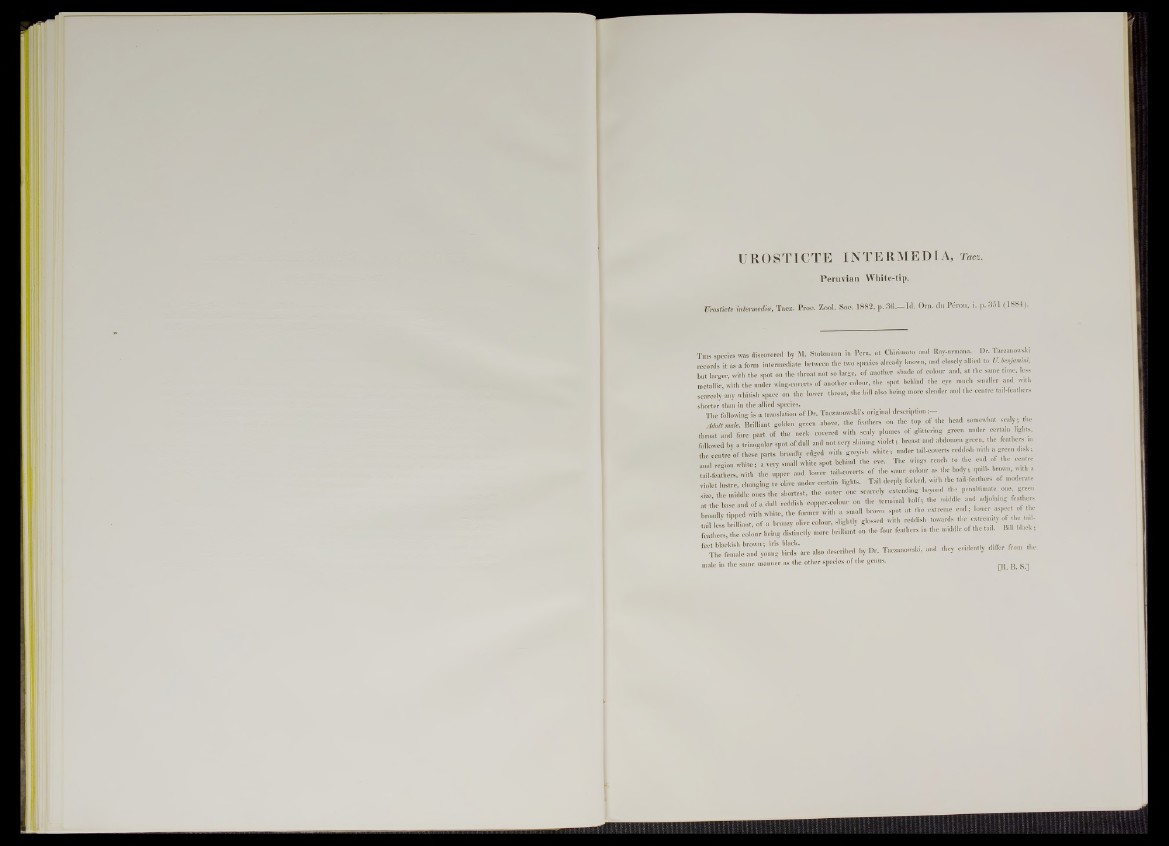
UROSTICTE INTERMEDIA, Tacz.
Peruvian Whit e-tip.
Urosticte intermedia, Tacz. Proc. Zool. Soc. 1 8 8 2 , p. 3 6— Id. Om. duPdrou, i. p. 351 (1 8 8 4 ).
T his species was discovered by M. Slolzmann in Peru, at Chirimpto and Ray-urmana. Dr. Taczanowsk,
records it as a form intermediate between the two species already known, and closely allied to U. benjamin,,
but larger, with the spot on the throat not so large, I another shade of eolonr and, at the same time, less
metallic, with the under wing-coverts of another colour, the spot behind the eye much smaller and with
scarcely any whitish space on the lower throat, the bill also being more slender and the centre tail-feathers
shorter than in the allied species.
The following is a translation of Dr. Taczanowski’s original description . /
Adult male. Brilliant golden green above, the feathers on the top of the head somewhat scaly ; the
throat and fore part of the neck covered with scaly plumes of glittering green under certain lights,
followed by a triangular spot of dull and not very shining violet ; breast andabdomen green, the fea thersg
the centre of these parts broadly edged with greyish white; under tad-coverts reddish with a green disk;
anal region white; a very small white spot behind the eye. The wings reach to the end of the centre
' tail-feathers, with the upper and lower tail-coverts of the same colour as the body; quills brown, with a
violet lustre, changing to olive under certain lights. Tail deeply forked, with the tail-feathers of moderate
size the middle ones the shortest, the outer one scarcely extending beyond the penultimate one green
at the base and of a dull reddish copper-colour on the terminal halt; the middle and adjoining feather
broadly tipped with white, the former with a small brown spot at the extreme end.; lower aspec of t k
tail kss brilliant, o f a bronzy olive colour, slightly glossed with reddish towards the «tnunity of ,the 'tad-
feathers, the colour being distinctly more brilliant on the four feathers in the middle of the tad. Bill black;
^ “ e t d ’i n g I k i t a r e also described by Dr. faczanowski, and they evidently differ from the
male in the same manner as the other species of the genus. J |